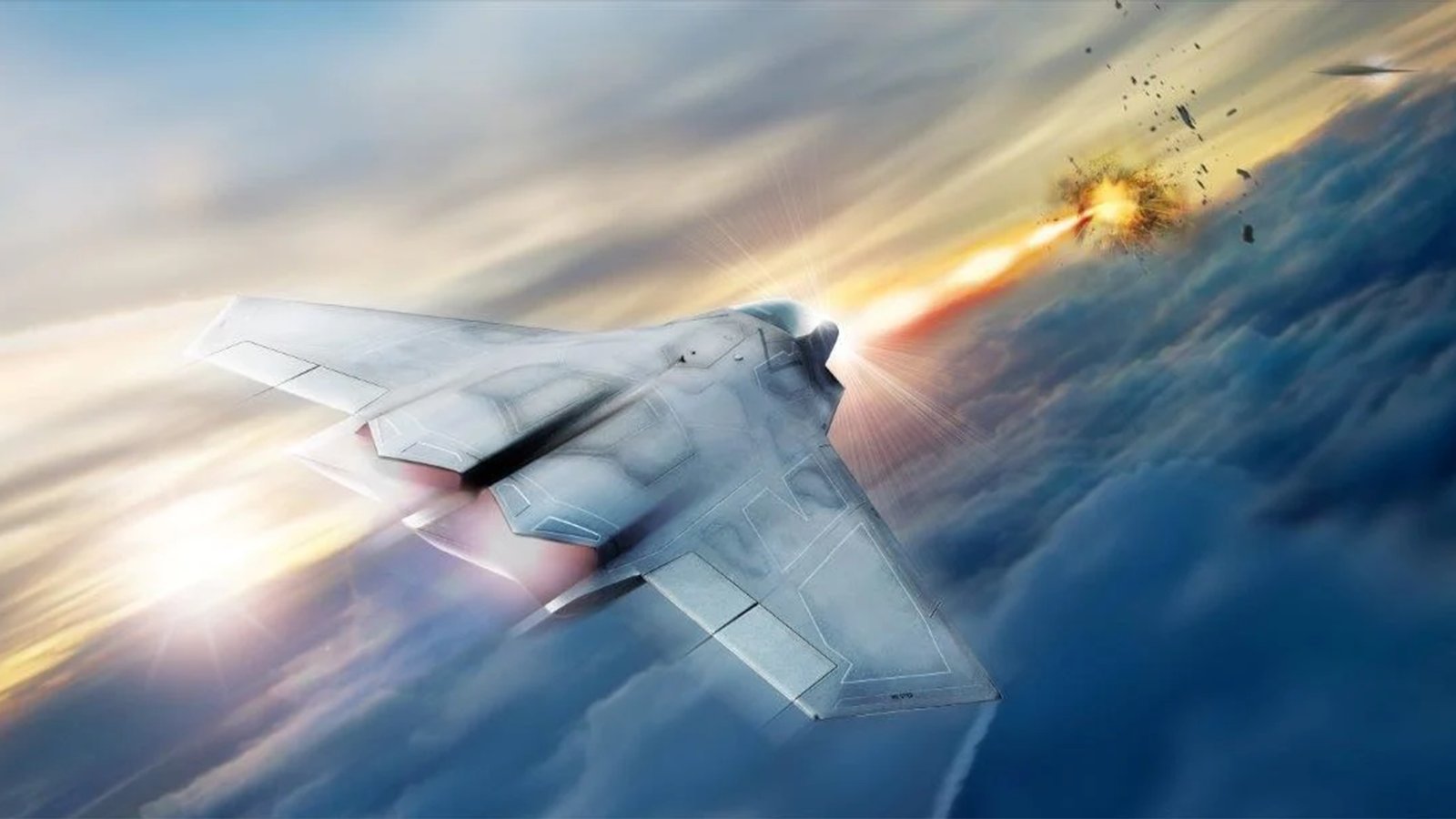
Lockheed Martin is helping the Air Force Research Lab develop and mature high energy laser weapon systems, including the high energy laser pictured in this rendering. (Air Force Research Lab)
WASHINGTON: Lockheed Martin today revealed that it delivered a compact directed energy weapon to the Air Force Research Lab in February, a key milestone in the service’s effort to equip a tactical fighter jet with a laser capable of shooting down anti-aircraft missiles.
“It is the smallest, lightest, high energy laser of its power class that Lockheed Martin has built to date,” Tyler Griffin, a company executive, told reporters earlier this month in the run up to the Farnborough Air Show. “It is a critical benchmark in developing an operational laser weapon system in the airborne domain.”
While the Pentagon has pushed forward a number of different directed energy weapons in recent years, the value of this one, dubbed LANCE, is its minimal space, weight and power requirements. “It’s one-sixth the size of what we produced for the Army going back to just 2017,” Griffin added, referring to the Robust Electric laser Initiative program.
The LANCE acronym stands for “Laser Advancements for Next-generation Compact Environments.” Lockheed got the initial contract to design, develop and produce LANCE in November 2017 as part of the Air Force’s Self-protect High Energy Laser Demonstrator (SHiELD) program.
That effort has three components: in addition to LANCE, there is a beam control system, built by Northrop Grumman, which directs the laser on its target, as well as a pod that is mounted on the aircraft. Boeing is responsible for that pod subsystem, which the Air Force said it received in February 2021.
Kent Wood, acting director of AFRL’s directed energy directorate, said in a statement to Breaking Defense that the subsystems delivered under SHiELD “represent the most compact and capable laser weapon technologies delivered to date.”
“Mission utility analyses and wargaming studies are ongoing, and will help determine how these subsystems and/or an integrated laser weapon system might potentially be used. Specific targets for future tests and demonstrations will be determined by the results of these studies as well,” he continued.
With the laser delivered to the Air Force, Griffin said the next step will be to start integrating the weapon itself with the thermal system that manages LANCE’s heating and cooling.
When asked about when the weapon will be fired, Griffin deferred to the Air Force. Wood, the AFRL official, told Breaking Defense the service has not made any final decisions for “follow-on activities.”
“A variety of potential applications and platforms are being considered for potential demonstrations and tests, in partnership with our warfighter stakeholders,” he said. “At this time, no decision has been made on a specific application or platform for these follow-on activities, no flight demonstration is funded and there is no direct transition plan into a program of record.”






















